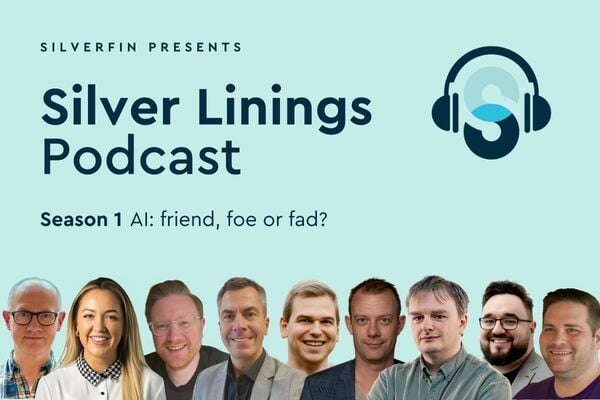Trust is the currency of accounting. From compliance filings to AI-assisted recommendations, clients want more than answers, they want assurance that your processes are accurate, auditable and secure. In our recent Strategic Customer Forum, leaders had a clear message: accounting teams that can prove control over data, workflows and AI will win—and keep—advisory work.
What partners want: risk mitigation first, speed second
When discussing concerns at the forum, a number of themes surfaced, the most common including AI safety, data privacy, and audit readiness. Teams are experimenting with generative AI tools, but the lack of clear rules around AI use means that there is a risk of exposing client data or shipping unreviewed outputs. There is an awareness that, even with enterprise licences available, team members will often choose to work with consumer AI because it feels faster and more responsive. This, however, creates governance gaps that should make risk officers nervous.
The use of consumer AI is perhaps understandable. Many compliance workflows are felt to be repetitive and manual, with poor use of connected data and inconsistent adoption of software tools. This can cause duplicated effort, unreliable quality and avoidable rework, none of which are conducive to client confidence.
Regulatory scrutiny is rising too: new expectations on data security, client-money controls and ESG reporting require accounting firms to evidence not only their output, but the controls behind them. The way to cope with this pressure, leaders at the forum said, was to build “trust by design”. In other words, embed controls in their work processes -not bolt them on at the end.
Why trust differentiates
When advisory moves faster than audit, clients ask a simple question: how do I know I can trust this? An accounting team that can show secure working papers, role-based access, and an immutable audit trail, plus documented review of AI-generated material, inspires confidence and builds trust. That trust compounds over time: it means fewer escalations, faster approvals and broader scope. In a crowded market, this is a boon.
AI Governance Framework: 7 Steps to Safe AI Implementation
1) Secure working papers as the single source of truth
Bring reconciliations, workpapers and commentary under one framework. Connect relevant data so that it can be applied wherever it’s relevant. This helps to eliminate version sprawl and makes accountability transparent for reviewers, clients and regulators.
2) Role-based access that mirrors engagement reality
Access to sensitive financial data needs to match roles and responsibilities, and partners repeatedly flagged “right people, right data, right time” as the non-negotiable foundation for AI-enabled work. Map access to roles such as partner, manager, preparer, client. and apply least-privilege by default, which means that each user is given the minimum level of access rights to perform their job. This addresses privacy obligations while giving teams confidence to collaborate globally.
3) End-to-end audit trails—human and AI
Capture preparer/reviewer actions, comments and sign-offs automatically, but when AI assists with tasks, require a documented human check. This ensures that AI tools are not a black box of outputs but a supervised assistant that boosts quality and defensibility.
4) Safe AI, not shadow AI
Create a controlled environment for experimentation with AI, publish a prompt library and a list of rules, and train staff to critique outputs. With the use of AI becoming more pervasive, several participants said that education, not prohibition, reduced misuse and improved results, especially among newer staff. This not only protects the company from misuse, it also encourages innovation within the team.
5) Adoption you can evidence
Leaders stressed that deployment does not mean adoption. Track the usage of AI tools, not just log-ins, and review the quality with efficiency dashboards; pair measurement with continuous guidance so teams use new workflows properly, not just superficially.
6) Standardise 80%, flex 20%
Set working standards for the team and then allow managed local variances. Standardise 80%, flex 20% is about striking the balance between consistency and practicality. There are certain processes that should be understood across the organisation as standard, particularly the processes that protect quality and enable scale. Other processes can be variable to accommodate local without risking integrity or trust. Automation can help to reduce human variation.
To help meet these standards, firms should harmonise their core financial data structures after acquisition so that they are consistent and comparable. Leaders reported that without this step, even the application of the same software will be used differently, eroding trust.
Clients want to know that no matter which office they work with, they’ll get the same baseline quality. When expanding across borders or after acquisitions, standardisation is what makes it possible to integrate quickly.
7) Change is cultural as much as technical
Resistance is human: fear of capability, job security and constant change were all cited. The teams that made progress led with the ‘why’ behind the change, used peer champions, removed legacy alternatives, and rewarded visible behaviour change. Recognition was not just offered at project completion.
What good looks like
- Faster, cleaner reviews: less back-and-forth, fewer ambiguities because reviewers are given context, evidence and ownership.
- No surprises on privacy: client data stays inside role-based boundaries; AI usage is supervised, logged and explainable.
- Consistent outputs across offices: partners present the same story, supported by the same data, formatted the same way, before and after acquisitions.
- Audit-ready by default: when regulators or clients ask for evidence, it can be produced promptly.
How Silverfin helps you operationalise trust
Silverfin’s platform brings your working papers, controls and collaboration into a governed, cloud-based workflow, so trust is embedded, not retrofitted. With role-based access, connected data, and end-to-end audit trails, firms standardise the 80% that should never vary, while keeping the 20% flexibility to serve unique client needs. Combined with safe AI features and adoption dashboards, accounting teams have the ability to create a system where risk goes down as client confidence goes up.
The payoff: risk down, loyalty up
Trust is not a slogan; it’s the result of visible control. When clients see that your digital workflows protect their data, evidence your judgements and govern your use of AI, they don’t just accept your advice, they pursue it. That preference compounds into repeat work, referrals and permission to move further into value added tasks such as advisory. Build the workflow, and trust will follow.














